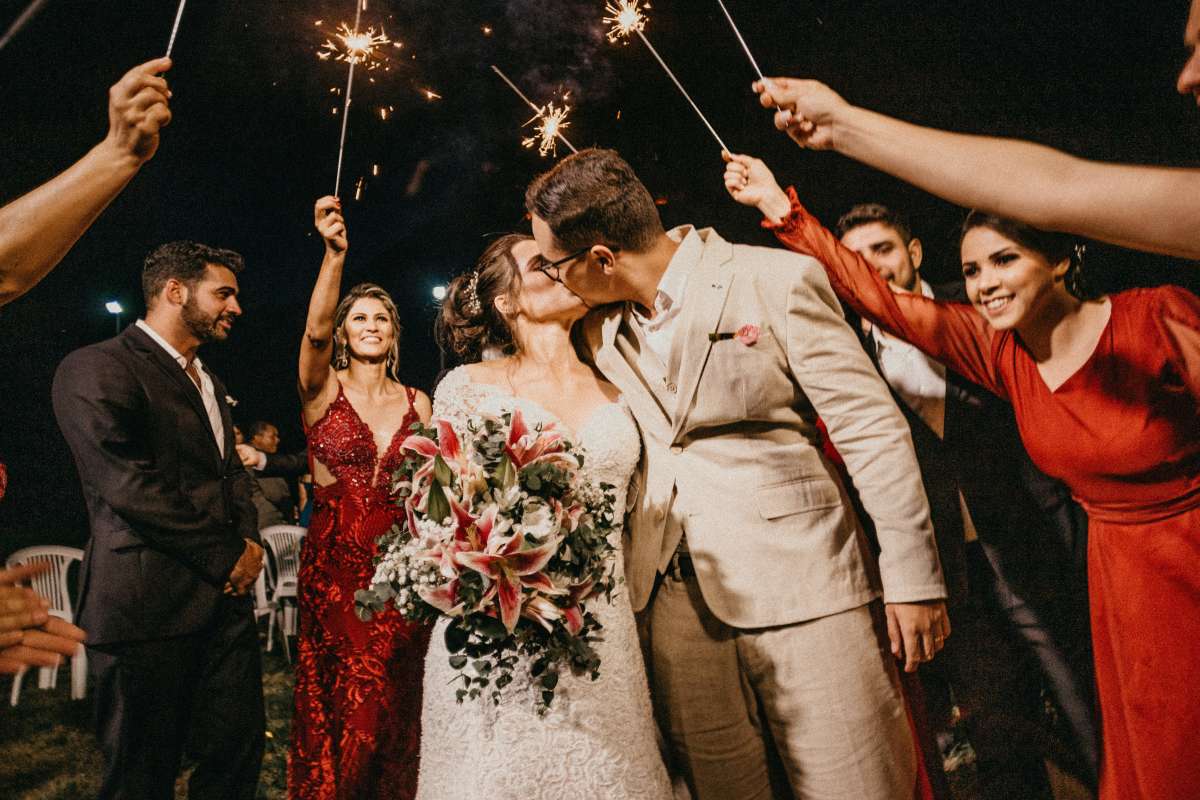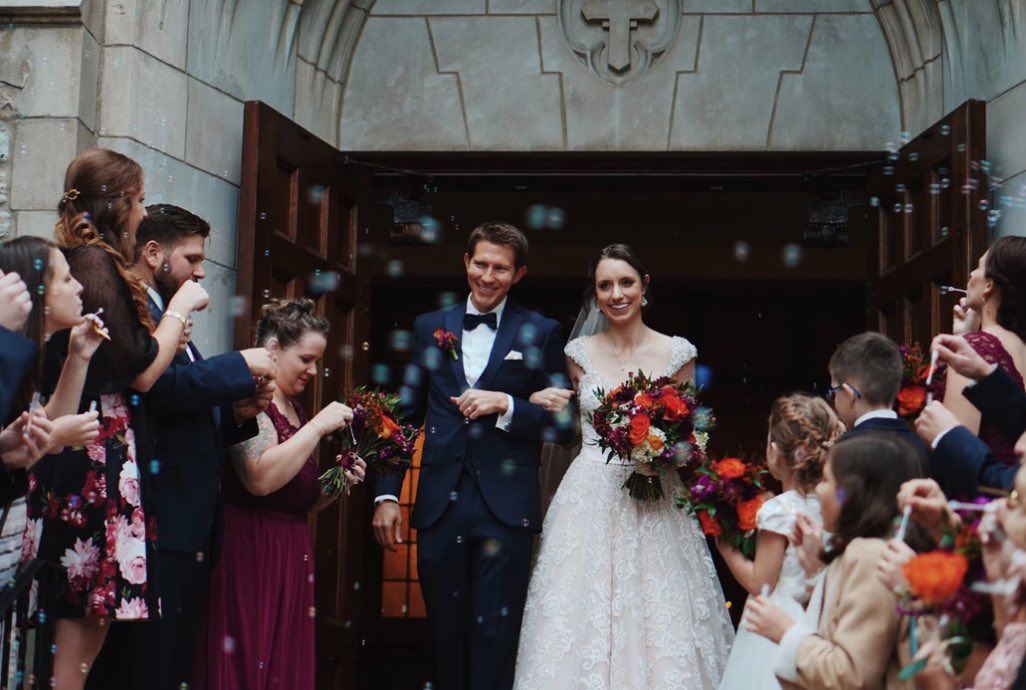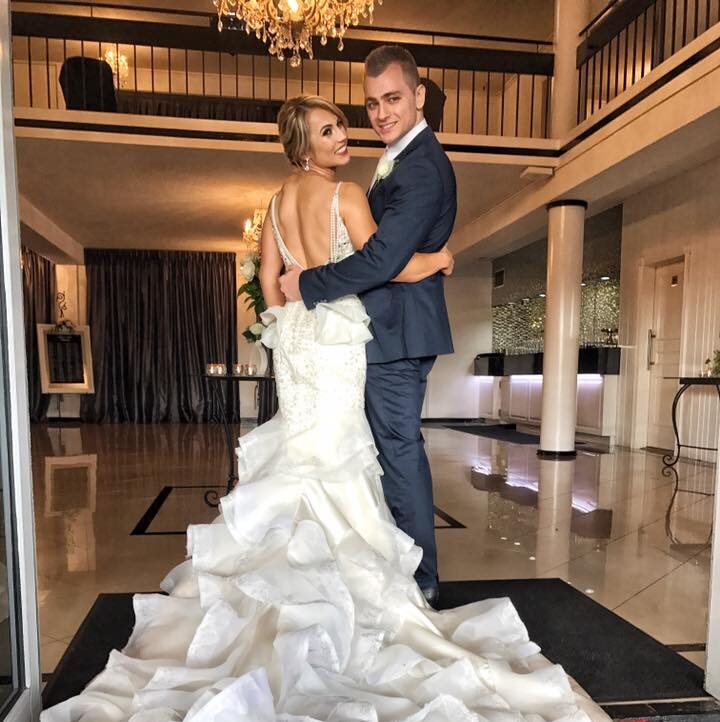Your grand entrance at the wedding is your moment to shine. It’s when you and your partner walk into the room as newlyweds, and all eyes are on you. It’s not just a walk; it’s the start of your celebration, and it’s a chance to make a statement.
Whether you want to keep it classic or add a bit of fun, getting the announcement right sets the tone for the entire evening. From the music to the words used, everything matters. With expert grand entrance planning, you can ensure your entrance is unforgettable. Let’s take a look at how to make your newlywed grand entrance announcement something your guests will never forget.
Newlywed Grand Entrance Announcement: Creating a Memorable First Impression
The newlywed grand entrance marks your first public appearance as a married couple. It’s an exciting moment that sets the stage for the rest of the wedding reception. From the energy in the room to the music playing, it’s your chance to kick off the celebration and make a memorable impression.
When I got married at Vogue Ballroom in 2017, I remember the mix of excitement and nerves. As we entered, everything felt surreal—like a dream. That moment of walking into the room, all eyes on us, was unforgettable. It’s a feeling every couple should get to experience.
Why The Newlywed Grand Entrance Matters
The grand entrance is like the opening scene of a movie—it sets the tone for the whole night. It’s when the party officially begins. Whether you’re aiming for a dramatic moment or something light and fun, this moment shapes how everyone will experience the rest of the celebration.
In Melbourne, the climate or the season can play into your choice of music. A summer wedding might call for an upbeat track to get the party started, while a winter wedding might lean toward something romantic to set a cosy, intimate vibe.
Who Should Make the Newlywed Grand Entrance Announcement?
Traditionally, the wedding DJ or MC handles the grand entrance announcement. The MC’s job is to create excitement and set the tone for the night. I’ve seen the difference a great MC can make. When we had ours, he made the moment feel truly special with an enthusiastic introduction that had the crowd buzzing.
The key is communication—make sure your MC knows what kind of energy you want. If you’re after a formal tone or something more laid-back, let them know in advance so the intro feels just right.
Crafting the Perfect Grand Entrance Announcement
Your announcement should reflect who you are as a couple. Do you want something classic, modern, or a little quirky? If you’re aiming for something traditional, you could go with, “Let’s welcome Mr. and Mrs. [Last Name]!” or for something more fun, “For the first time as husband and wife, here’s [Bride’s Name] and [Groom’s Name]!”
A couple I worked with once chose a dramatic “Now introducing the newlyweds, [First Names]!” It had the perfect energy to set up a high-energy reception. Another couple kept it simple, just introducing themselves by their first names, which felt laid-back and fun—exactly their style.
How to Personalise Your Announcement
The grand entrance is your chance to make it personal. If you want to include a funny or meaningful anecdote, go for it. “Let’s raise our glasses to [Bride’s Name] and [Groom’s Name], who met on a rainy day and are now here to start their forever together” can add a personal touch.
If you prefer something simple, a straightforward “Let’s welcome the newlyweds” works too. It’s about what feels true to you and your partner.
Order of Introductions: What’s the Best Sequence?
The order in which you introduce your guests and wedding party members is important. It helps build anticipation and ensures everyone gets the spotlight. Here’s a typical flow that many couples choose for their grand entrance:
Traditional vs. Modern Order of Introductions
- Parents of the Bride
- Parents of the Groom
- Wedding Party Members – This includes ushers, bridesmaids, flower girls, and ring bearers.
- The Couple – The moment everyone’s been waiting for.
Some couples prefer to switch things up. For example, some opt to introduce the entire wedding party at once, creating a more casual feel. Others might choose to skip introductions for certain individuals, like parents or siblings, if it doesn’t feel necessary.
When my partner and I got married, we chose to introduce our bridal party first as a group, followed by us as the final entrance. The energy in the room was electric by the time we walked in, and it felt like the perfect build-up to the main event.
Customising the Sequence to Fit Your Style
While there’s a traditional order, don’t feel like you need to stick to it. The beauty of your wedding day is that you can do it your way. If you want the couple to walk in first with no preamble, go for it. Some couples prefer the wedding party to make their entrances as a group, adding to the excitement before they step in as a couple.
Consider your venue too. For instance, a venue like Vogue Ballroom, with its grand staircase and sweeping views, might encourage a more dramatic, individual introduction for each member of the wedding party. But in a smaller venue, grouping everyone together for a faster-paced entrance might work better.
Personalising Your Wedding Grand Entrance Announcement
Your grand entrance is a chance to add a bit of personality. Whether you want a formal introduction or something fun and lighthearted, there are plenty of ways to make it feel unique to you as a couple.
Adding a Special Touch with a Unique Entrance Song
A great entrance song can set the perfect mood. Some couples choose a romantic tune, while others opt for something more upbeat to get the party started. I’ve worked with couples who’ve chosen songs that represent their relationship, like “You Make My Dreams” by Hall & Oates or “Can’t Stop the Feeling!” by Justin Timberlake. It’s all about picking a song that makes you feel great and reflects your vibe as a couple.
One couple I worked with chose “The Final Countdown” by Europe for a dramatic, upbeat entrance. It had the whole room laughing and ready to party! Another couple used a soft instrumental version of their favourite song, creating a more romantic and intimate feeling.
Creative Ideas for a Fun and Memorable Entrance
Think about incorporating fun surprises into your entrance. Maybe a choreographed dance, a surprise confetti blast, or a clever entrance using the venue’s features—like a grand staircase, glass elevator, or even entering through a curtain or smoke. I worked with a couple who used a grand staircase at their venue, and the moment they appeared at the top was truly magical. The whole room gasped in awe.
One fun idea is to have the wedding party make a coordinated entrance too. This could be a group dance or even just fun introductions that match the couple’s energy. It’s about making it memorable for everyone involved, not just the bride and groom.
Handling Sensitive Family Dynamics During the Grand Entrance
Family dynamics can be tricky, especially if there are divorced parents, remarriages, or other complex situations. It’s important to be sensitive and respectful in how you introduce family members.
Navigating Complex Family Situations
If your family situation is a bit complicated, you can always address it simply and gracefully. If a parent is attending alone (whether single, divorced, or widowed), it’s essential to acknowledge their role. For example, “Please welcome Mrs. [Name], mother of the bride” or “Mr. [Name], father of the groom.”
For divorced or remarried parents, you might choose to introduce them with their current partner or spouse. For example, “Mr. [Name], father of the bride, and Mrs. [Name], stepmother of the bride” or “Mr. [Name], father of the groom, and his partner, [Partner’s Name].”
If there are any sensitive situations, such as deceased parents, only mention them if the couple has specifically asked for that. It’s all about making sure everyone feels respected and comfortable.
Final Tips for a Flawless Newlywed Grand Entrance Announcement
The grand entrance is a crucial moment in your wedding, but with a bit of planning and practice, it can be one of the most memorable parts of your celebration. Here are a few final tips to ensure everything runs smoothly.
Rehearsing with Your DJ or MC
Make sure to rehearse the grand entrance with your MC or DJ before the big day. This rehearsal ensures that the music, announcements, and timing are just right. I can’t stress enough how important this step is. A couple I worked with didn’t rehearse their grand entrance, and there were some awkward moments when the music didn’t start on cue. Fortunately, they were able to laugh it off, but it’s much easier when everything is coordinated.
Take a few minutes to run through the sequence of introductions, the volume of the music, and any cues that need to be hit. If you’re incorporating a surprise element like a choreographed dance or a dramatic reveal, make sure the MC knows when to cue those moments. Timing is everything!
Keep It Fun and Reflect Your Style
Above all, remember that the grand entrance should feel authentic to you as a couple. Whether you want it to be a big production or something simple and intimate, it’s about reflecting your personalities and what feels comfortable for you. Don’t be afraid to have fun with it—this is your moment, so make it count!
A few years ago, I worked with a couple who wanted something totally different. Instead of the traditional “Mr. and Mrs.” introduction, they chose to announce themselves as “The Power Couple” before entering to a high-energy track. The crowd went wild, and it set the tone for the entire evening. It was fun, personal, and absolutely them.




